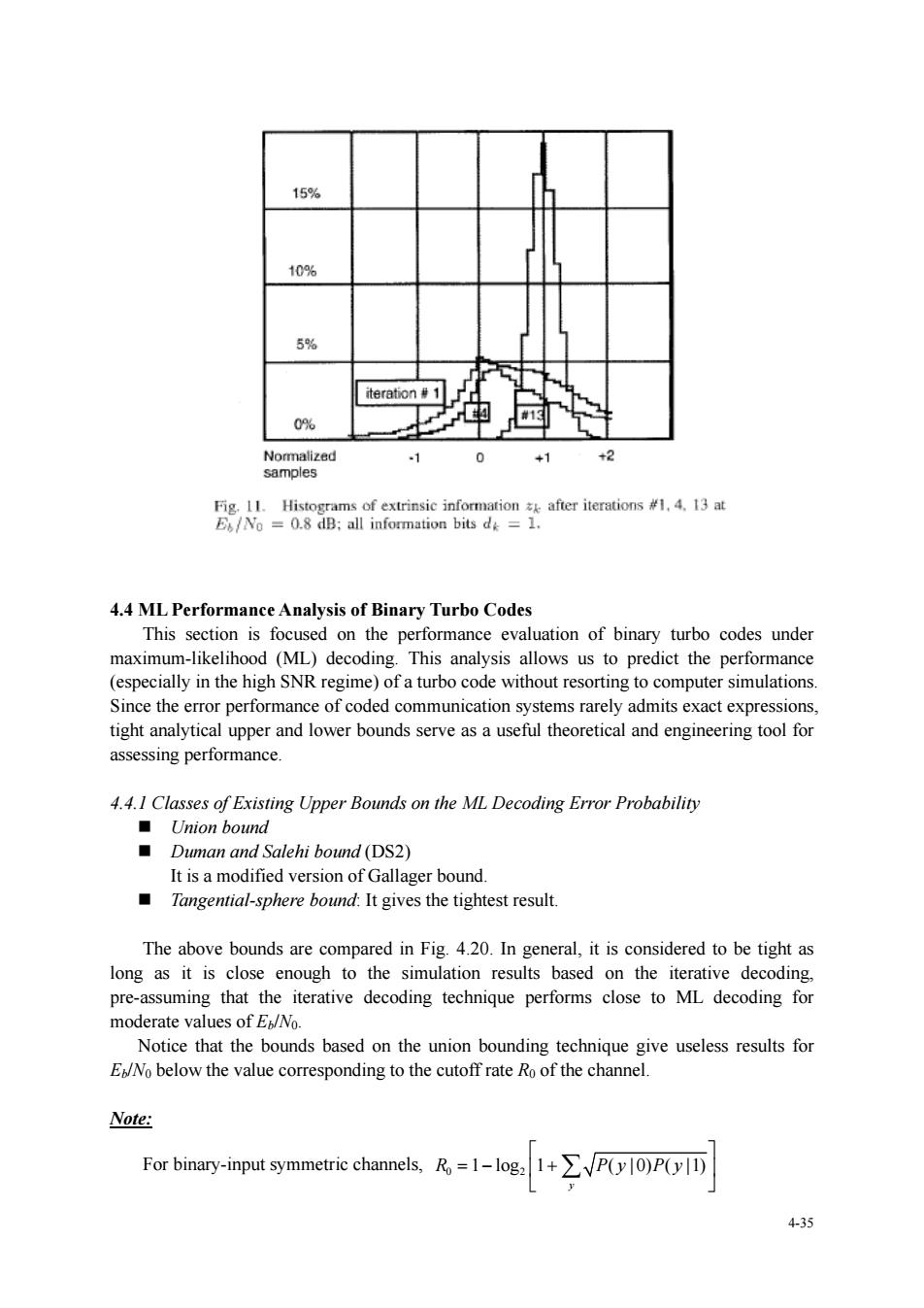正在加载图片...

15% 10 5% 0% 1 0 *1 2 4.4 ML Performance Analysis of Binary Turbo Codes This section is focused on the performance evaluation of binary turbo codes under maximum-likelihood (ML)decoding.This analysis allows us to predict the performance ime)of a turbo code without resorting to co mputer simulations performance of coded communication systems rarely admits exact expressi analvtical upper and lower bounds serve as a useful theoretical and enge ool assessing performance. 4.4.1 Classes of Existing Upper Bounds on the ML Decoding Error Probability ■ Union bound Duman and Salehi bound (DS2) It is a modified version of Gallager bound. Tangential-sphere bound.It gives the tightest result. The above bounds are cmpared in Fig 40.In general,it is considered to be tight as long as it is close enough to the simulation results based on the iterative decoding pre-assuming that the iterative decoding technique performs close to ML decoding for moderate values of E/No. Notice that the bounds based on the union bounding technique give useless results for E/No below the value corresponding to the cutoff rate Ro of the cha Note: For binary-input symmetric channels,R=1-log:1+>P(y10)P(y1) 35 4-35 4.4 ML Performance Analysis of Binary Turbo Codes This section is focused on the performance evaluation of binary turbo codes under maximum-likelihood (ML) decoding. This analysis allows us to predict the performance (especially in the high SNR regime) of a turbo code without resorting to computer simulations. Since the error performance of coded communication systems rarely admits exact expressions, tight analytical upper and lower bounds serve as a useful theoretical and engineering tool for assessing performance. 4.4.1 Classes of Existing Upper Bounds on the ML Decoding Error Probability Union bound Duman and Salehi bound (DS2) It is a modified version of Gallager bound. Tangential-sphere bound: It gives the tightest result. The above bounds are compared in Fig. 4.20. In general, it is considered to be tight as long as it is close enough to the simulation results based on the iterative decoding, pre-assuming that the iterative decoding technique performs close to ML decoding for moderate values of Eb/N0. Notice that the bounds based on the union bounding technique give useless results for Eb/N0 below the value corresponding to the cutoff rate R0 of the channel. Note: For binary-input symmetric channels, 0 2 1 log 1 ( | 0) ( |1) y R Py Py